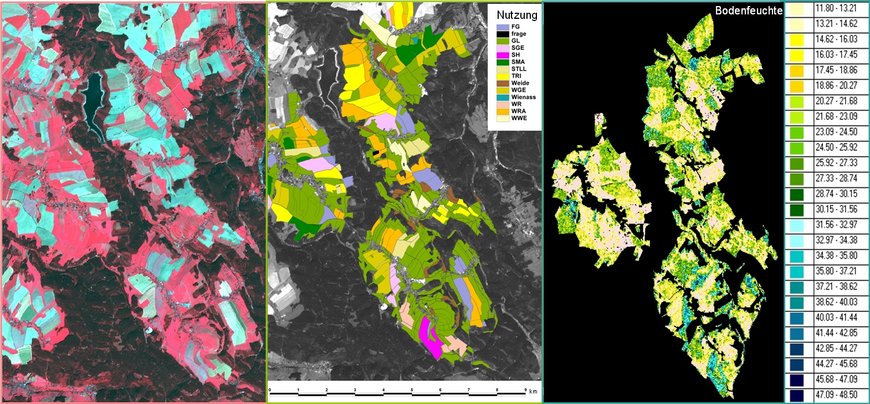Operational Discharge and Flooding Predictions in Head Catchments
The detection of soil moisture from ENVISAT-ASAR data
The project OPAQUE is aimed at the task to improve the operational flood forecast for small head catchment areas. While for large river basins the forecast of floods on the basis of models works well, a warning is often insufficient in the head catchments because of the direct reaction of the landscape to the higher quantities of water. In the hydrologic modelling the description of the initial condition of the catchment area plays an important role at the beginning of a flood actuating precipitation event. The degree of the soil saturation at this time decides substantially over the fact whether the added precipitation can still infiltrate to the soil or directly goes into aboveground discharge and leads to a strongly increased flood risk. Thus an observation of the soil moisture continuous in space and time is required. Since field measuring procedures cannot carry that out, the remote sensing with radar systems was tested intensively in the last years on appropriate possibilities.
The radar backscattering signal depends apart from the wavelength, the polarization and the angle of incidence of the sent waves mainly on the dielectric characteristics of the target surface. Landscape cutouts typical for river catchments are soil areas covered by vegetation. Here the signal is substantially shaped of:
- the water content of the vegetation
- the geometry of the plant layer (inventory height, degree of coverage, inventory density, orientation, layering)
- the roughness of the soil
- the soil moisture.
First tests with ENVISAT ASAR data for the catchment area Weißeritz (Saxonia) showed the suitability of these C-Band data for the demanded surface mapping. An integrated measuring concept for the determination of soil moisture in field surveys and the representation of the same moisture situations in the satellite data will allow further investigations in the spring 2008.
Project Homepage:


